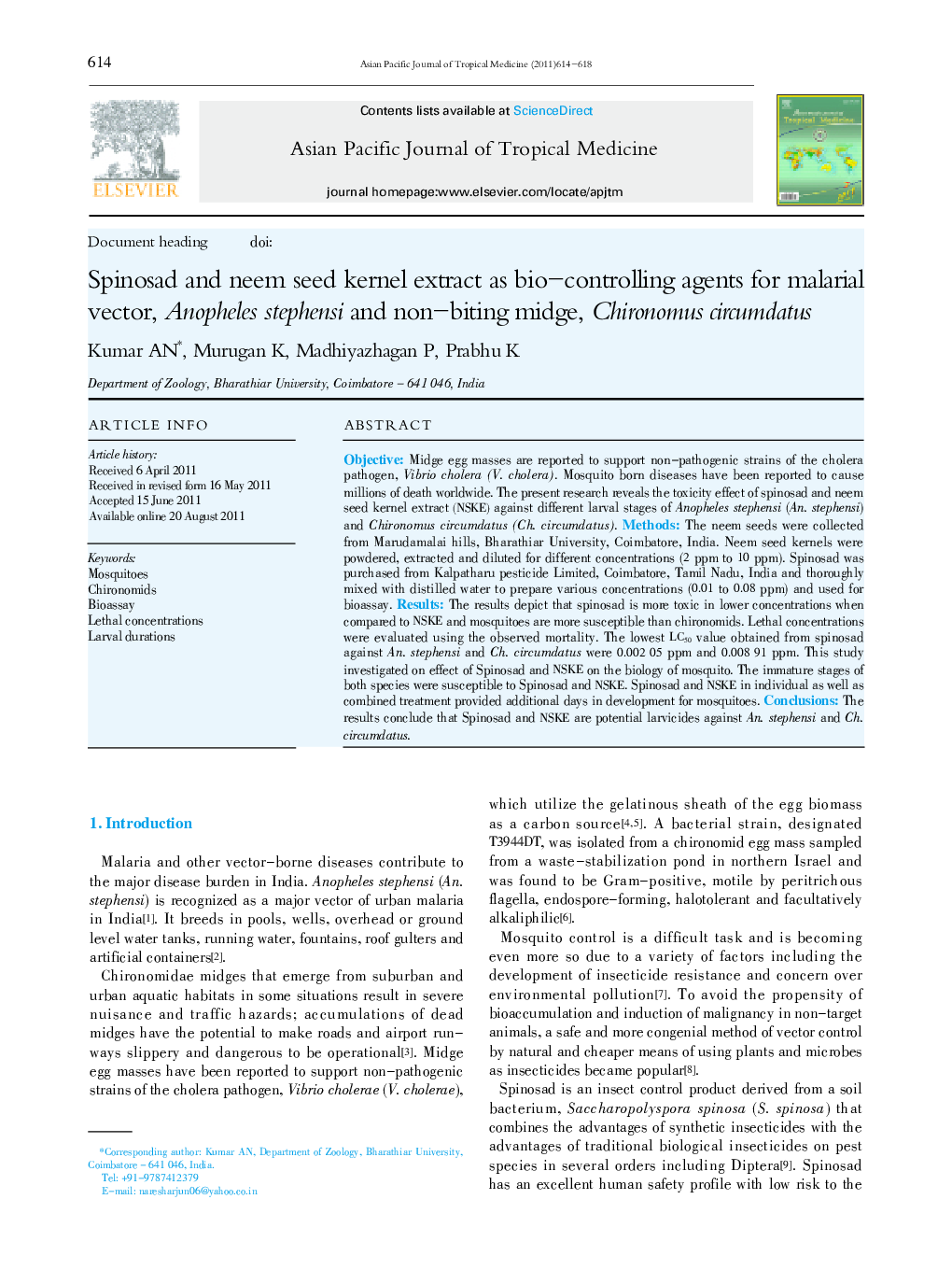| کد مقاله | کد نشریه | سال انتشار | مقاله انگلیسی | نسخه تمام متن |
|---|---|---|---|---|
| 3456618 | 1596062 | 2011 | 5 صفحه PDF | دانلود رایگان |

ObjectiveMidge egg masses are reported to support non-pathogenic strains of the cholera pathogen, Vibrio cholera (V. cholera). Mosquito born diseases have been reported to cause millions of death worldwide. The present research reveals the toxicity effect of spinosad and neem seed kernel extract (NSKE) against different larval stages of Anopheles stephensi (An. stephensi) and Chironomus circumdatus (Ch. circumdatus).MethodsThe neem seeds were collected from Marudamalai hills, Bharathiar University, Coimbatore, India. Neem seed kernels were powdered, extracted and diluted for different concentrations (2 ppm to 10 ppm). Spinosad was purchased from Kalpatharu pesticide Limited, Coimbatore, Tamil Nadu, India and thoroughly mixed with distilled water to prepare various concentrations (0.01 to 0.08 ppm) and used for bioassay.ResultsThe results depict that spinosad is more toxic in lower concentrations when compared to NSKE and mosquitoes are more susceptible than chironomids. Lethal concentrations were evaluated using the observed mortality. The lowest LC50 value obtained from spinosad against An. stephensi and Ch. circumdatus were 0.002 05 ppm and 0.008 91 ppm. This study investigated on effect of Spinosad and NSKE on the biology of mosquito. The immature stages of both species were susceptible to Spinosad and NSKE. Spinosad and NSKE in individual as well as combined treatment provided additional days in development for mosquitoes.ConclusionsThe results conclude that Spinosad and NSKE are potential larvicides against An. stephensi and Ch. circumdatus.
Journal: Asian Pacific Journal of Tropical Medicine - Volume 4, Issue 8, August 2011, Pages 614-618